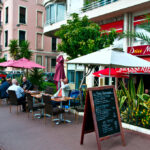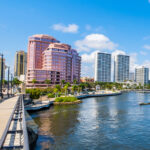Seville, the capital of Spain’s Andalusia region, is a city of passion, history, and culture. A cosmopolitan center with a rich Moorish heritage, it is the perfect place for those seeking to understand the soul of Spain. Seville’s grandeur, colorful local events, warm people, and vibrant culinary scene all make for an unforgettable experience. In this detailed overview, we will explore all aspects of Seville, from its storied past to its contemporary allure.
History of Seville
Seville’s history is a captivating blend of Roman, Islamic, Jewish, and Christian influences, all of which have left a lasting imprint on the city’s architecture, traditions, and culture. The city was initially a Roman settlement known as Hispalis. During the 8th century, Seville came under Islamic rule, becoming a major cultural and economic center under the Almohads in the 12th century.
In 1248, King Ferdinand III of Castile captured Seville, marking a significant turning point in the city’s history. Under Christian rule, Seville flourished as a pivotal trading hub with the discovery of the Americas in the late 15th century. The city’s Golden Age came to an end in the 17th century, but the architecture and culture that blossomed during this time continue to define Seville’s unique character today.
Landmarks and Architecture
Seville’s diverse history is beautifully reflected in its architecture. At the heart of the city is the Seville Cathedral, the world’s largest Gothic cathedral and the third-largest church in the world. Its towering Giralda, initially a minaret during the city’s Moorish era, provides stunning panoramic views of the city.
Adjacent to the cathedral is the Alcázar, a royal palace originally built by Moorish Muslim kings. It showcases a stunning blend of Islamic, Gothic, Renaissance, and Baroque styles, creating an architectural masterpiece that is a UNESCO World Heritage Site.
Beyond the cathedral and the Alcázar, other notable landmarks include the Torre del Oro, a 13th-century watchtower by the Guadalquivir river, the Plaza de España, a magnificent square featuring a semi-circular brick building with stunning tile work, and the Metropol Parasol, a modern structure known as “Las Setas de Sevilla,” which offers a striking contrast to the city’s historical architecture.
Cultural Experiences
Seville is a city of vibrant traditions. It is recognized as the birthplace of Flamenco, an expressive dance form that combines singing (cante), dancing (baile), guitar playing (toque), and rhythmic hand claps (palmas). Immerse yourself in this tradition by visiting one of the numerous ‘tablaos’ (Flamenco venues) that dot the city.
Every year, Seville hosts two important festivals – Semana Santa (Holy Week) and Feria de Abril (April Fair). During Semana Santa, stunning processions make their way through the city streets, reflecting the deep-seated religious sentiments of the locals. Shortly after, the city transforms into a vibrant spectacle for the Feria de Abril, where Sevillanos celebrate with traditional dances, horse parades, and copious amounts of food and wine.
Gastronomic Scene
Seville’s food scene is a delight for the senses. The city is renowned for its tapas tradition, where small dishes are served alongside drinks, encouraging social interaction. Explore local tapas bars and savor a variety of dishes such as ‘jamon iberico’ (Iberian ham), ‘gambas al ajillo’ (garlic prawns), ‘espinacas con garbanzos’ (spinach with chickpeas), and ‘tortilla Española’ (Spanish omelette). Seville’s oranges are also famed, often used to make the local marmalade.
Don’t miss the opportunity to sample sherry in the region where it originates, and for a sweet finish, try ‘pestiños’ (honey pastries), ‘torrijas’ (Spanish-style French toast), or ‘churros con chocolate’.
Getting Around
Seville’s city center is compact and most of its major attractions are within walking distance from each other. The city is also bike-friendly, boasting more than 170 kilometers of cycling lanes. The public transportation system, including buses, trams, and a metro line, is efficient and economical. For exploring areas around Seville, the city’s Santa Justa Train Station offers regular connections to other cities in Spain.
Contemporary Seville
Today, Seville is a bustling modern city that effortlessly marries the old with the new. Contemporary attractions include the Isla Mágica Theme Park, the expansive shopping district around Calle Sierpes, and the thriving nightlife scene in areas such as Alameda, Calle Betis, and Plaza Salvador. The city also hosts a number of international festivals such as the Seville Film Festival and the Flamenco Biennial.
In summary, Seville is a city that effortlessly captures the spirit of Spain. It is a place where the echoes of a tumultuous history mingle with the rhythms of modern urban life. Whether you’re a history buff, a foodie, a culture enthusiast, or a leisure traveler, Seville offers experiences to enthrall and entertain. It is not just a destination, but a captivating journey into the heart of Andalusia, promising memories that will last a lifetime.







